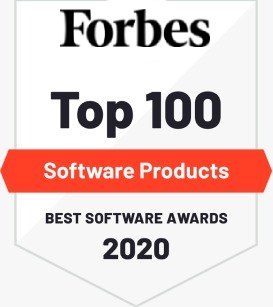Section 1 : Start Here
|
|
Lecture 1 | Introduction and Outline copy | 00:04:02 Duration |
|
|
Lecture 2 | Anyone Can Succeed in this Course | 00:11:55 Duration |
|
|
Lecture 3 | Statistics vs | 00:09:59 Duration |
|
|
Lecture 4 | Review of the classification problem | 00:01:53 Duration |
|
|
Lecture 5 | Introduction to the E-Commerce Course Project | 00:08:22 Duration |
Section 2 : Basics What is linear classification What's the relation to neural networks
|
|
Lecture 1 | Linear Classification | 00:04:50 Duration |
|
|
Lecture 2 | Biological inspiration - the neuron | 00:03:36 Duration |
|
|
Lecture 3 | How do we calculate the output of a neuron logistic classifier - Theory | 00:04:18 Duration |
|
|
Lecture 4 | How do we calculate the output of a neuron logistic classifier - Code | 00:04:31 Duration |
|
|
Lecture 5 | Interpretation of Logistic Regression Output | 00:05:33 Duration |
|
|
Lecture 6 | E-Commerce Course Project Pre-Processing the Data | 00:05:24 Duration |
|
|
Lecture 7 | E-Commerce Course Project Making Predictions | 00:03:01 Duration |
|
|
Lecture 8 | Feedforward Quiz | |
|
|
Lecture 9 | Prediction Section Summary | 00:01:11 Duration |
|
|
Lecture 10 | Suggestion Box | 00:03:04 Duration |
Section 3 : Solving for the optimal weights
|
|
Lecture 1 | Training Section Introduction | 00:01:38 Duration |
|
|
Lecture 2 | A closed-form solution to the Bayes classifier | 00:05:59 Duration |
|
|
Lecture 3 | What do all these symbols mean X, Y, N, D, L, J, P(Y=1X), etc | |
|
|
Lecture 4 | The cross-entropy error function - Theory | 00:02:46 Duration |
|
|
Lecture 5 | The cross-entropy error function - Code | 00:04:53 Duration |
|
|
Lecture 6 | Visualizing the linear discriminant Bayes classifier Gaussian clouds | 00:02:28 Duration |
|
|
Lecture 7 | Maximizing the likelihood | 00:06:35 Duration |
|
|
Lecture 8 | Updating the weights using gradient descent - Theory | 00:06:20 Duration |
|
|
Lecture 9 | Updating the weights using gradient descent - Code | 00:03:10 Duration |
|
|
Lecture 10 | E-Commerce Course Project Training the Logistic Model | 00:06:48 Duration |
|
|
Lecture 11 | Training Section Summary | 00:02:02 Duration |
Section 4 : Practical concerns
|
|
Lecture 1 | Practical Section Introduction | 00:02:45 Duration |
|
|
Lecture 2 | Interpreting the Weights | 00:04:08 Duration |
|
|
Lecture 3 | L2 Regularization - Theory | 00:08:39 Duration |
|
|
Lecture 4 | L2 Regularization - Code | 00:01:43 Duration |
|
|
Lecture 5 | L1 Regularization - Theory | 00:02:53 Duration |
|
|
Lecture 6 | L1 Regularization - Code | 00:06:13 Duration |
|
|
Lecture 7 | L1 vs L2 Regularization | 00:03:06 Duration |
|
|
Lecture 8 | The donut problem | 00:10:02 Duration |
|
|
Lecture 9 | The XOR problem | 00:06:12 Duration |
|
|
Lecture 10 | Why Divide by Square Root of D | 00:06:32 Duration |
|
|
Lecture 11 | Practical Section Summary | 00:02:02 Duration |
Section 5 : Checkpoint and applications How to make sure you know your stuff
|
|
Lecture 1 | BONUS Sentiment Analysis | 00:05:14 Duration |
|
|
Lecture 2 | BONUS Exercises + how to get good at this | 00:02:48 Duration |
Section 6 : Project Facial Expression Recognition
|
|
Lecture 1 | Facial Expression Recognition Project Introduction | |
|
|
Lecture 2 | Facial Expression Recognition Problem Description | 00:12:21 Duration |
|
|
Lecture 3 | The class imbalance problem | 00:06:01 Duration |
|
|
Lecture 4 | Utilities walkthrough | 00:05:45 Duration |
|
|
Lecture 5 | Facial Expression Recognition in Code | 00:10:41 Duration |
|
|
Lecture 6 | Facial Expression Recognition Project Summary |
Section 7 : Background Review
|
|
Lecture 1 | Gradient Descent Tutorial | 00:04:30 Duration |
Section 8 : Setting Up Your Environment (FAQ by Student Request)
|
|
Lecture 1 | Windows-Focused Environment Setup 2018 | 00:20:20 Duration |
|
|
Lecture 2 | How to install Numpy, Scipy, Matplotlib, Pandas, IPython, Theano, and TensorFlow | 00:17:33 Duration |
Section 9 : Extra Help With Python Coding for Beginners (FAQ by Student Request)
|
|
Lecture 1 | How to Uncompress a | 00:03:18 Duration |
|
|
Lecture 2 | How to Code by Yourself (part 1) | 00:15:54 Duration |
|
|
Lecture 3 | How to Code by Yourself (part 2) | 00:09:23 Duration |
|
|
Lecture 4 | Proof that using Jupyter Notebook is the same as not using it | 00:12:29 Duration |
|
|
Lecture 5 | Python 2 vs Python 3 | 00:04:38 Duration |
Section 10 : Effective Learning Strategies for Machine Learning (FAQ by Student Request)
|
|
Lecture 1 | How to Succeed in this Course (Long Version) | 00:10:24 Duration |
|
|
Lecture 2 | Is this for Beginners or Experts Academic or Practical Fast or slow-paced | 00:22:04 Duration |
|
|
Lecture 3 | Machine Learning and AI Prerequisite Roadmap (pt 1) | 00:11:19 Duration |
|
|
Lecture 4 | Machine Learning and AI Prerequisite Roadmap (pt 2) |
Section 11 : Appendix FAQ Finale
|
|
Lecture 1 | What is the Appendix | 00:02:48 Duration |


